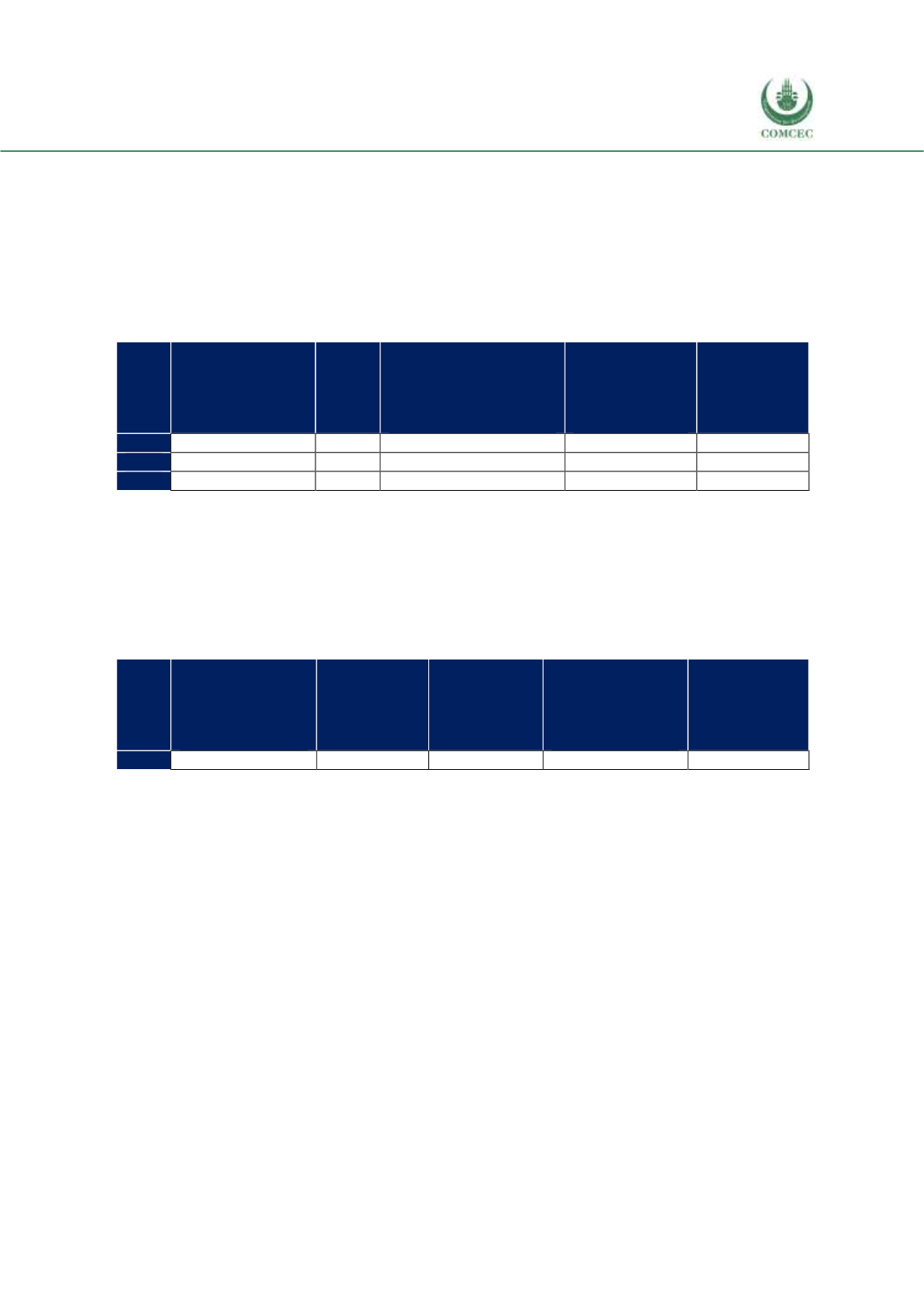

Reviewing Agricultural Trade Policies
To Promote Intra-OIC Agricultural Trade
83
Turkey applies preferential tariffs to a diverse set of countries. The entire list includes the EU
and EFTA countries, countries in special groups such as the LDCs and the GSP countries, and
countries that are the beneficiaries of the incentive arrangement for sustainable development.
Table 4.7 lists 35 OIC member countries that export to Turkey under preferential tariffs.
Focusing on the top 5 import products from the top 5 OIC exporters (Table 4.8), the tariff rate of
the “Animal and vegetable oils, fats and waxes” remains same over the last three years while the
tariff rate for coffee, oil seeds and vegetables and fruits were reduced.
Table 4. 8 Tariffs Set by Turkey for Top 5 Import Products from the OIC Exporters, %
41-42-43:
Animal and
vegetable oils,
fats and waxes
263:
Cotton
07:
Coffee, tea, cocoa,
spices, and
manufactures thereof
22:
Oil-seeds and
oleaginous
fruits
05:
Vegetables
and fruit
2014
27.2
0.0
29.2
16.9
29.4
2015
27.5
0.0
20.5
12.5
28.9
2016
27.5
0.0
20.5
12.5
28.9
Source: ITC Macmap, CEPII BACI, Eurostat RAMON, UN Comtrade, UN Trade Statistics, and authors’
calculations
Note: Top 5 products are identified considering 3 year average between 2014 and 2016 and ad valorem
equivalent (%) rates are considered for applied tariff rates.
With regards to tariff rates for Turkey’s top five export products, Table 4.9 presents the available
data. The 2016 tariff rates demonstrate that tariff rates for dairy products are lowest while the
tariff rates for beverages and tobacco are highest.
Table 4. 9 Tariffs Set by OIC Countries for Turkey’s Top 5 Export Products, %
04:
Cereals and
cereal
preparations
05:
Vegetables
and fruit
11-12:
Beverages
and tobacco
41-42-43:
Animal and
vegetable oils,
fats and waxes
02:
Dairy
products and
birds’ eggs
2016
20.3
13.0
41.7
11.6
9.0
Source: ITC Macmap, CEPII BACI, Eurostat RAMON, UN Comtrade, UN Trade Statistics, and authors’
calculations
Note: Top 5 products are identified considering 3 year average between 2014 and 2016 and ad valorem
equivalent (%) rates are considered for applied tariff rates.
NTMs
Turkey has harmonized the SPS measures with the EU by adopting the main framework law on
SPS. Following the 2010 adoption of the main framework law on SPS (the Law on Veterinary
Services, Plant Health, Food and Feed), Turkey has adopted and implemented many of the
regulations during the review period, thus, approximately 100 regulations have been put in
place as secondary legislation. Regarding TBT matters, Turkey revised its regulations in 2012 to
conform to the EU in the areas of CEmarking, conformity assessment bodies, and notified bodies.
Both imports and exports are subject to a number of border measures in Turkey, including
outright prohibitions, licensing, controls, and restrictions (WTO, 2016)
Table 4.10 summarizes the numbers of NTMs that have been imposed by Turkey and that are
currently in force for agri-food products, agricultural raw materials and fish products. Clearly, a
vast majority of NTMs imposed by Turkey are either export subsidies or SPS measures. Besides,
nearly all of the NTMs reported are imposed on agri-food products.


















